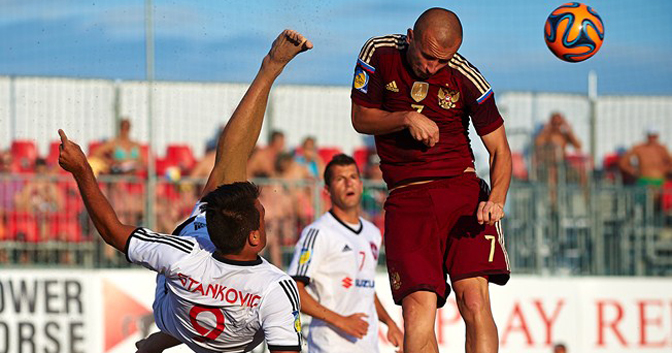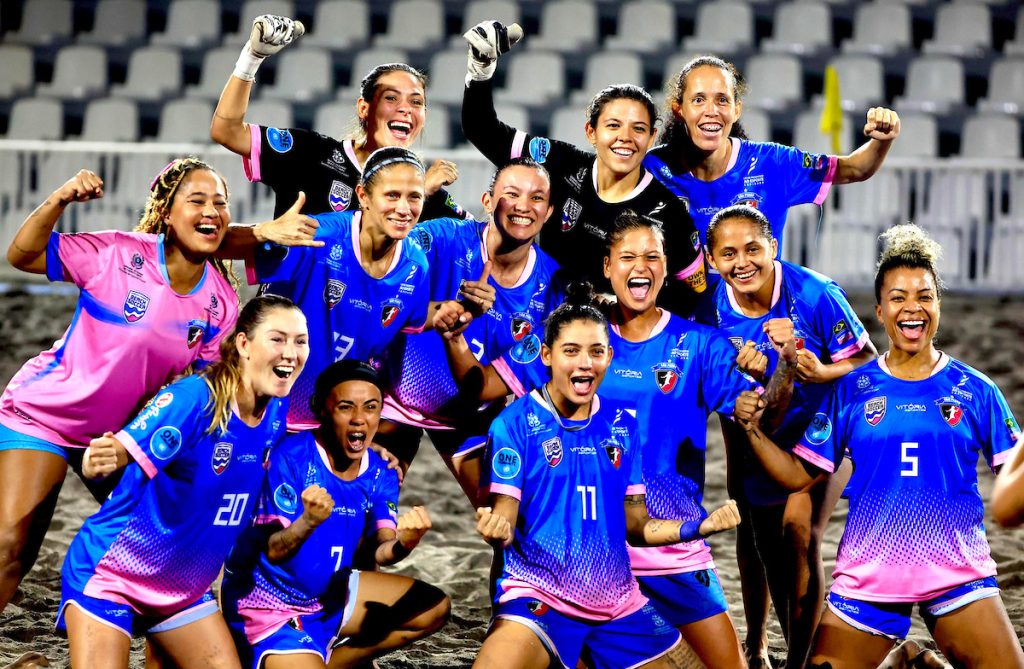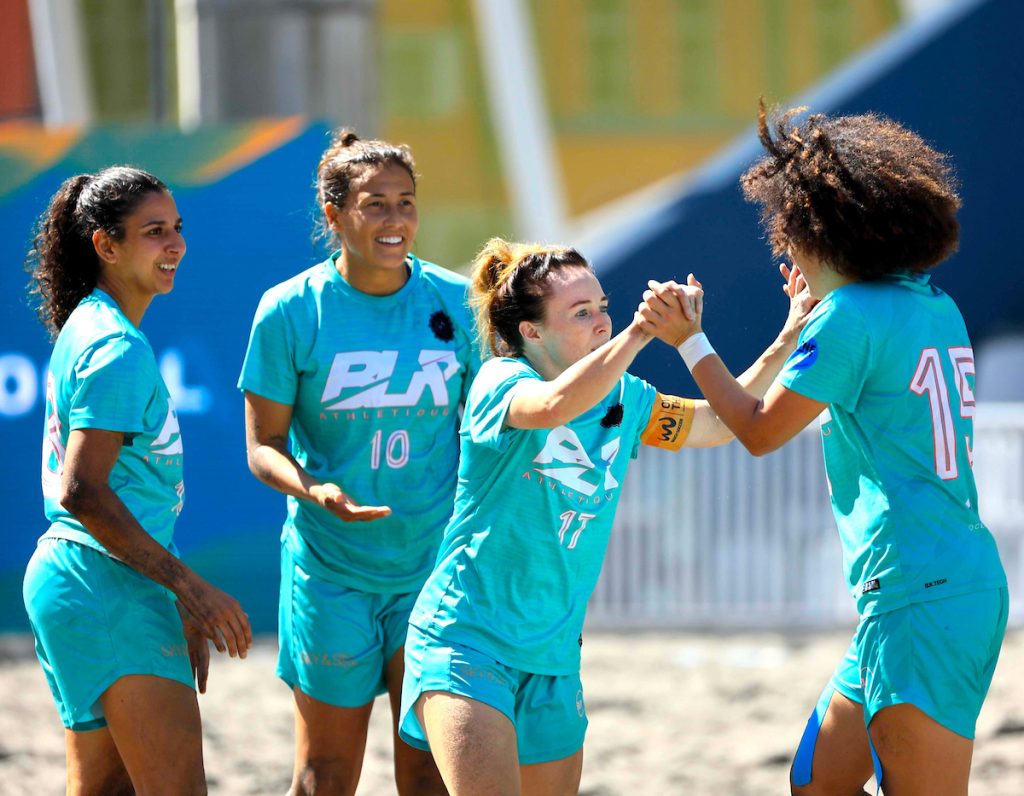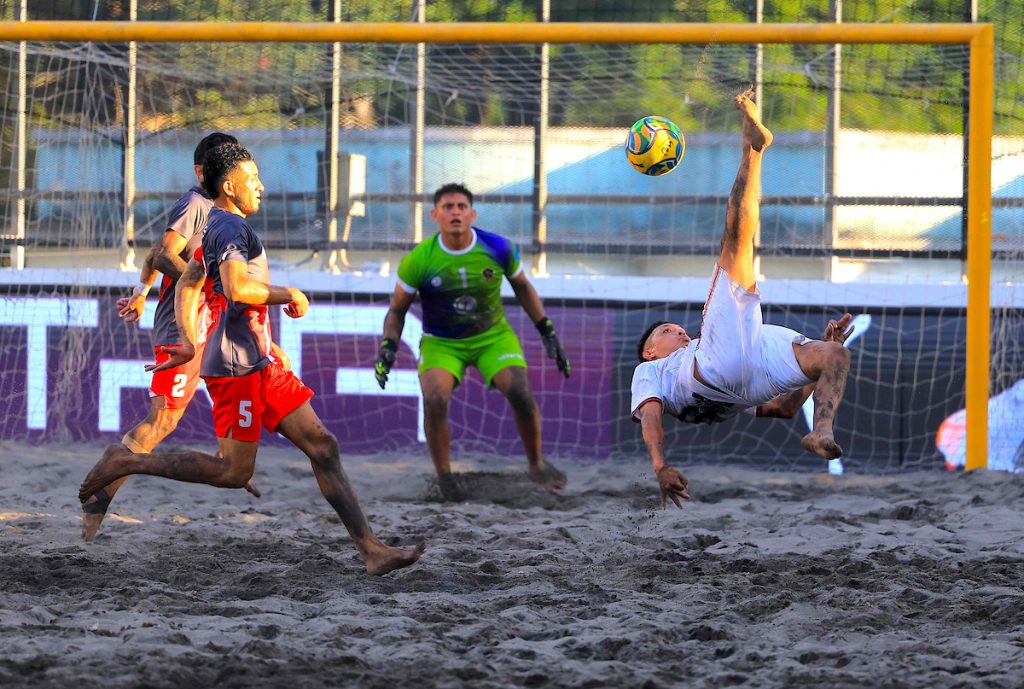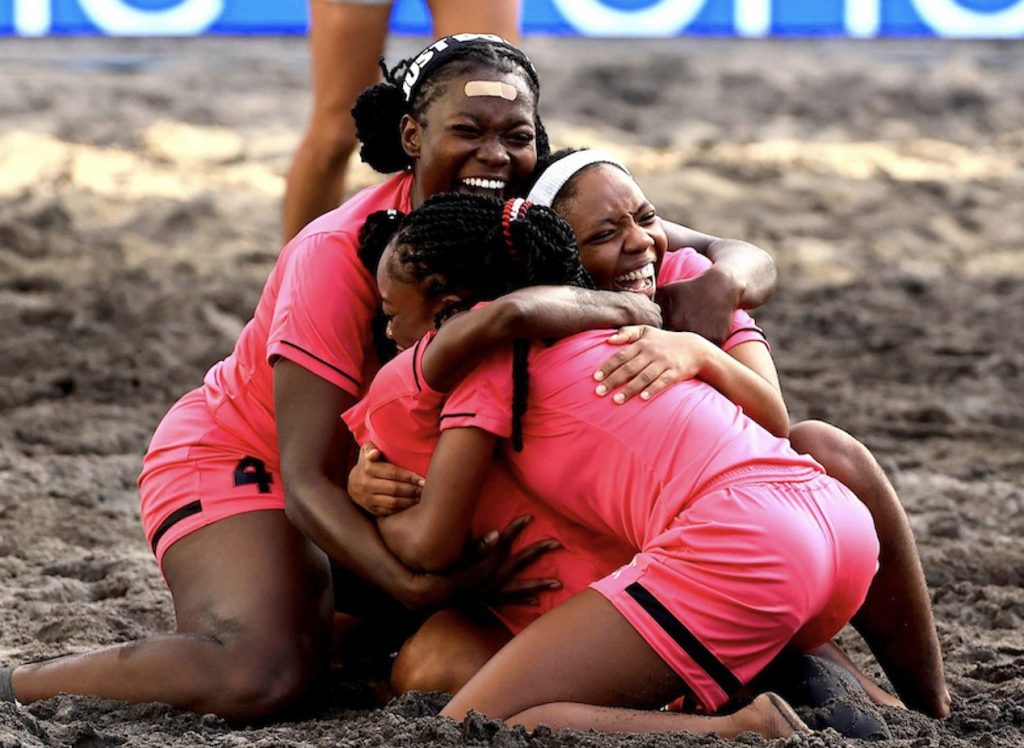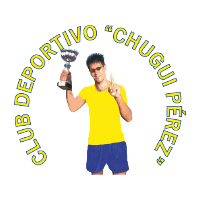The FIFA Beach Soccer World Cup begins in less than a week and here is a refresher on the laws of the game
Just like the previous editions of the FIFA Beach Soccer World Cup, Portugal 2015 is sure to supply spectacular action, emotions aplenty and more than the odd surprise. However, the features that differentiate beach soccer from traditional 11-a-side football or futsal make the game a unique discipline, with certain rules important to take into account whenever watching a match. FIFA.com brings you a closer look at these regulatory issues, in time for the start of the competition on 9 July.
Three twelve-minute periods
Beach soccer matches are divided into three periods with a net length of twelve minutes each, divided by two three-minute breaks. By net length, we mean that the clock stops whenever there is a goal, an infraction or when the match officials think a team is wasting time. If the ball is in play, the referee will not end a period until a move has run its course.
No draws allowed
A beach soccer match can be won or lost, but never drawn. Should the scores be level, the rules stipulate that a three-minute extra-time period should be played, with the winning team awarded two points as opposed to three for a victory within regulation time. If the sides can still not be separated, a penalty shootout will take place, with each team shooting three penalties kicks. If that is not enough, the golden goal rule applies, with the winning team awarded one point. Unlike a shootout in 11-a-side, in beach soccer the shootout is sudden death from the start, with the winning team awarded two points as opposed to three for a victory within regulation time. The losing team earn no points.
Unlimited substitutions
Every team begins each match with five players out on the sand – one goalkeeper and four outfield players – as well as seven substitutes, though there is no limit to the number of changes that can be made. All substitutions, including goalkeepers, can be made while play is still going on, for which reason there is a designated area for this to take place. The unlimited nature of changes makes this a key strategic factor during matches.
Disciplinary sanctions
A player who is sent off, be it for two bookings or a straight red, can be replaced by a substitute after a two-minute penalty, just as in futsal. Nevertheless, the substitute could come into play before those two minutes are up if the opposing team scores with their numerical advantage. There is no pre-set number of fouls that individual players must not exceed.
Goalkeeping peculiarities
Goalkeepers can move freely around their penalty area with the ball in their hands and, unlike other footballing disciplines, this area is marked out by a horizontal line across the whole pitch. Like any other player, keepers have four seconds to get the ball into play, which they can only do so by using their hands. However, they cannot score this way or by kicking the ball out on the volley, an offence that would be penalised by a free-kick. It is also important to note that the ball cannot be returned to a goalkeeper by a team-mate unless at least one opponent has touched it first. Breaking this rule results in a free-kick to the opposing team.
Free-kicks: direct only
Every infraction of the rules is sanctioned with a direct free-kick, with no wall permitted! The kick is taken from the spot where the foul was committed, except in the cases of penalty kicks (taken from the penalty spot) or time-wasting, passing the ball back to the goalkeeper or the keeper kicking the ball into play, with the free-kick taken from the halfway line in the latter three cases. What’s more, in the case of foul play, the kick must be taken by the player who was fouled – unless injury prevents this. The player has four seconds to play the ball after the referee’s whistle, or the free-kick will be awarded for the opposite team.
In case of doubt
Unlike the 11-a-side game but similarly to futsal, goals cannot be scored directly from kick-off and there is no offside. And, in another intriguing feature of this sport, throw-ins can be taken with either hands or feet.
(Source: FIFA.com)









